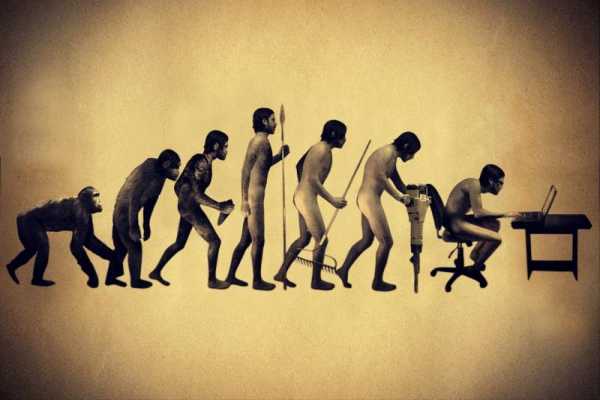Published on the 15/12/2016 | Written by Ian Apperley

He’s tackled the death of IT, now Ian Apperley muses about how IT should be ‘radicalised’ to stay relevant…
With the ‘death of IT’ upon us, how should IT professionals change themselves, their companies, and the industry to adapt to a new world? How you change your IT business to survive the coming changes? Let’s start by looking at how IT changes itself. Speed and adaptability not only keeps us competitive, it also allows business customers to trust us with their needs. Rather than being the IT group that says “no” we must learn to pivot rapidly to new market trends and businesses that are moving into an instant gratification world when it comes to technology. The idea of a federated structure is important. The problem is that if we have a process bound structure that requires all moving parts to move at once, then change is slow. Consider HP and IBM as examples. These are enormous machines that cannot adapt quickly because of their very interconnectedness. Compare that to the business model of Datacom New Zealand. It provides an adaptable, modular approach to delivering technology services. It is mainly federated, and I’ve described it in the past as “the farmer’s market of IT”. Datacom is broken into multiple business units, each of which oversees its own destiny. Each business unit is tasked with delivering specific services and often has its own profit and loss sheet. That means the unit is held accountable for success or failure; the traditional top-down model doesn’t encourage that accountability. It also means that if part of the organisation doesn’t perform, it can either be cut off or reconfigured without impacting the overall service delivery and revenue stream. Something which is almost impossible to do in a traditional organisation. Being the “farmers market of IT” is exactly what our customers want. Tackle the processes What isn’t clear just yet are the other issues such as “how to make ITIL go faster?” Automation may be the answer, but there are no real tool sets, yet. Starting with a functional view, “what is it that we need as a minimum” drives out exactly which processes are necessary, and which aren’t. It is necessary to form an internal research and intelligence group. This doesn’t have to be a dedicated staff; you can stretch it across the entire IT company. The responsibility of that team is to look at what is coming next, what the industry trends are, what the analysts are saying, what is happening on the edge of the industry. This is something that we do poorly. We get very focussed on the here and now and often build mental constraints. The effect is that we see new things as alien and threatening. Whereas if we have knowledge, then we can adapt rapidly. For example, when customers come to us and ask “how do I use machine learning systems”, or “what can blockchain do for us”, we already have ideas about it. It also means we can have an early recognition of what those technologies could do for our customers. Look outside This comes, in part, from the old style of thinking that, if we share our ideas, we could give a competitive advantage away. Others might steal our ideas. In Government, we look to the GCIO for this direction and while that is part of the solution, it is not the whole of it. It has been my experience in the last few years, covering startups and talking to agencies, companies, and idea makers, that the knowledge you gain through talking is incredibly valuable. Not one of us has the whole answer. Having a community where you can ask silly questions is critical to our success. Groups in New Zealand that can be a good place to start are NZ Rise, ITP, and NZ Tech. They provide those connections to the community. We need to stop competing with one another and start competing with the world. The old paradigm has been company vs. company, agency vs. agency, city vs. city, and country vs. country. Competition is now global and defies those borders. The Leed Street model is an interesting one that we should also consider. Leed Street in Wellington has a cluster of businesses that support each other. For example, you can go the Goldings, a craft beer bar, and order pizza and coffee. The pizza comes from a neighbouring business and the coffee another. This is an orchestration of an end-to-end solution in a business context. That model across technology companies pays dividends. It means that we start to see companies that provide an aggregated model for bringing those services together. The commercial Service Broker model. Examples of this are Liquid IT and Fronde. Have a little heart Building teams require a different focus to what we have done before. Traditionally, we look at a person’s CV and their skill set, and then we wonder why we have a poorly performing team. Don’t get me wrong; you need skills, you also need humans with real emotions. I am a firm believer in diversity. Teams should be a balance of age, youth, culture, religion, race, and sex. Don’t ask me why this works, just trust me that it does. It brings a great richness to a team dynamic when you mix it up that way. People fear those different characteristics; however, you find that teams that are diverse are intensely resilient. As an adjunct to that, when you are interviewing people, throw away the HR forms (and talk to people over lunch, coffee, or a drink if appropriate. These are some thoughts on how you create an IT culture that allows you to adapt and change direction rapidly. I’d love to hear yours. This is radicalisation of our industry and thinking, the old methodologies are dying and we must embrace an uncertain future. Ian is a director at Isis Group, a boutique consultancy that deals with strategic technology change along with advising startups, large companies, and government agencies on future business models.
The next necessary thing is to declutter processes. Time and again, IT shops can get very focussed on following process rather than outcomes. ITIL is an example. If you implement ITIL to 100 percent, you are going to slow down your business. If only the required processes are selected, a better result will be achieved.
As well as getting stuck in our world on a day-to-day basis, we frequently forget to look outside of our own organisations to see what others are doing.
The last piece to this falls into what my friend Mike Riversdale calls “heart.” Often as technologists, we have an engineering focus and forget about the people aspect. It’s not deliberate, it just is.





























